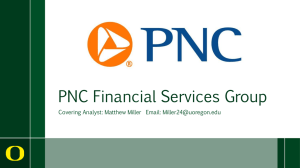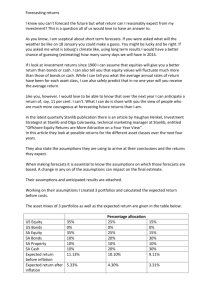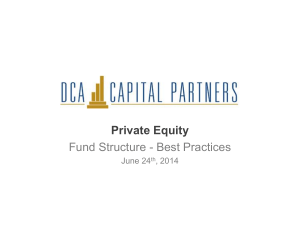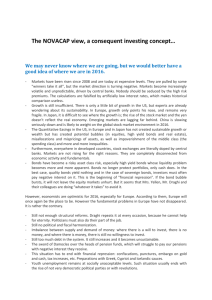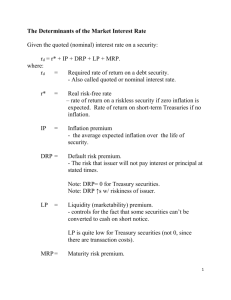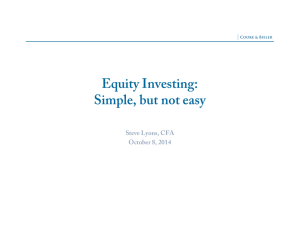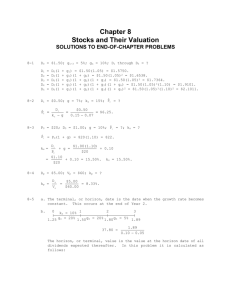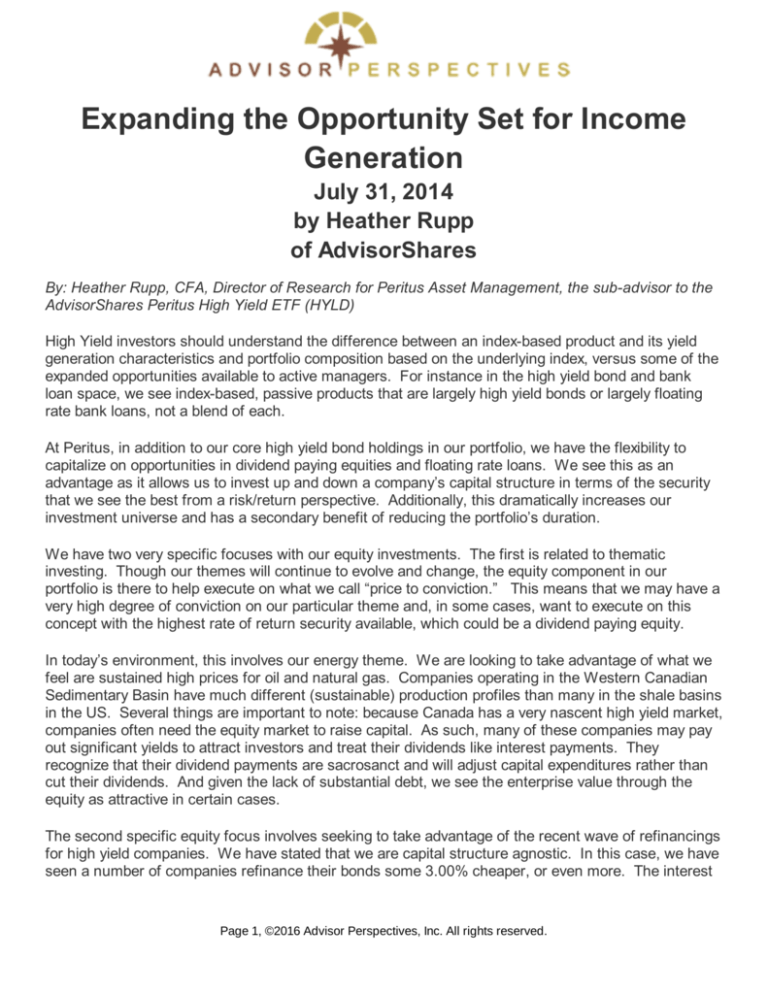
Expanding the Opportunity Set for Income
Generation
July 31, 2014
by Heather Rupp
of AdvisorShares
By: Heather Rupp, CFA, Director of Research for Peritus Asset Management, the sub-advisor to the
AdvisorShares Peritus High Yield ETF (HYLD)
High Yield investors should understand the difference between an index-based product and its yield
generation characteristics and portfolio composition based on the underlying index, versus some of the
expanded opportunities available to active managers. For instance in the high yield bond and bank
loan space, we see index-based, passive products that are largely high yield bonds or largely floating
rate bank loans, not a blend of each.
At Peritus, in addition to our core high yield bond holdings in our portfolio, we have the flexibility to
capitalize on opportunities in dividend paying equities and floating rate loans. We see this as an
advantage as it allows us to invest up and down a company’s capital structure in terms of the security
that we see the best from a risk/return perspective. Additionally, this dramatically increases our
investment universe and has a secondary benefit of reducing the portfolio’s duration.
We have two very specific focuses with our equity investments. The first is related to thematic
investing. Though our themes will continue to evolve and change, the equity component in our
portfolio is there to help execute on what we call “price to conviction.” This means that we may have a
very high degree of conviction on our particular theme and, in some cases, want to execute on this
concept with the highest rate of return security available, which could be a dividend paying equity.
In today’s environment, this involves our energy theme. We are looking to take advantage of what we
feel are sustained high prices for oil and natural gas. Companies operating in the Western Canadian
Sedimentary Basin have much different (sustainable) production profiles than many in the shale basins
in the US. Several things are important to note: because Canada has a very nascent high yield market,
companies often need the equity market to raise capital. As such, many of these companies may pay
out significant yields to attract investors and treat their dividends like interest payments. They
recognize that their dividend payments are sacrosanct and will adjust capital expenditures rather than
cut their dividends. And given the lack of substantial debt, we see the enterprise value through the
equity as attractive in certain cases.
The second specific equity focus involves seeking to take advantage of the recent wave of refinancings
for high yield companies. We have stated that we are capital structure agnostic. In this case, we have
seen a number of companies refinance their bonds some 3.00% cheaper, or even more. The interest
Page 1, ©2016 Advisor Perspectives, Inc. All rights reserved.
savings flows down the capital structure, with additional cash flow generation to the benefit of the
equity. So the dividend is further enhanced/protected by this interest savings and in some cases our
determination is the equity becomes the best risk/return part of the capital structure.
On the loan side, we see the biggest benefit being that there are companies that issue only loans and
not bonds. In some cases, these loans offer what we see as very attractive yield and by having the
flexibility to include both bonds and loans, we are able to take advantage of these opportunities; rather
than just being limited to those bond-issuing companies. Furthermore, as we noted above, because of
the floating rate nature, where-by rates can reset every three months, this can have a secondary
benefit of reducing the portfolio’s duration.
We see that having this sort of flexibility on both the loan and equity side, above and beyond our core
high yield bond holdings, as allowing us to expand the opportunity set for yield-bearing securities, giving
us more flexibility in a given market cycle and environment, and allowing us to work to maximize alpha.
© AdvisorShares
Page 2, ©2016 Advisor Perspectives, Inc. All rights reserved.

